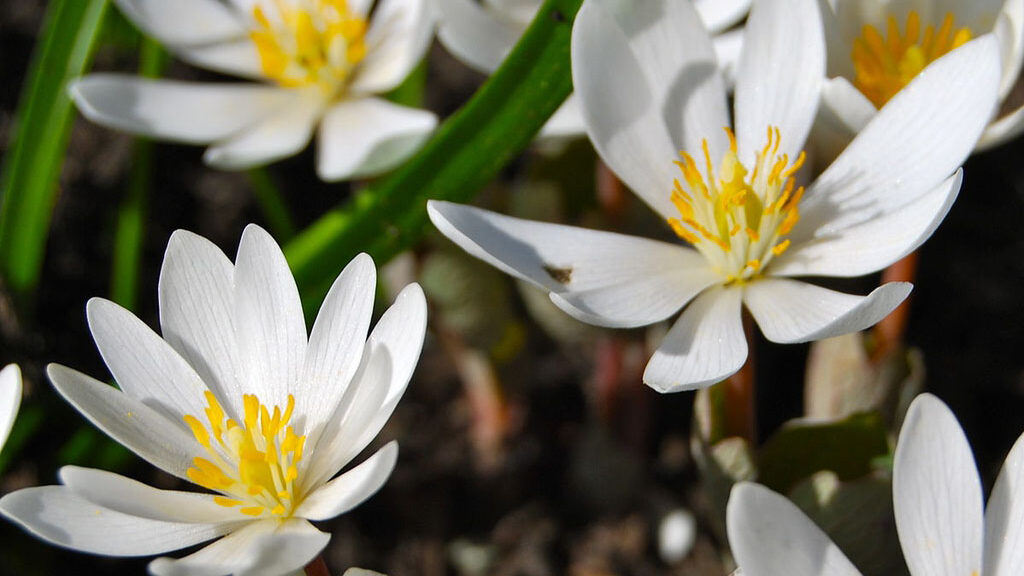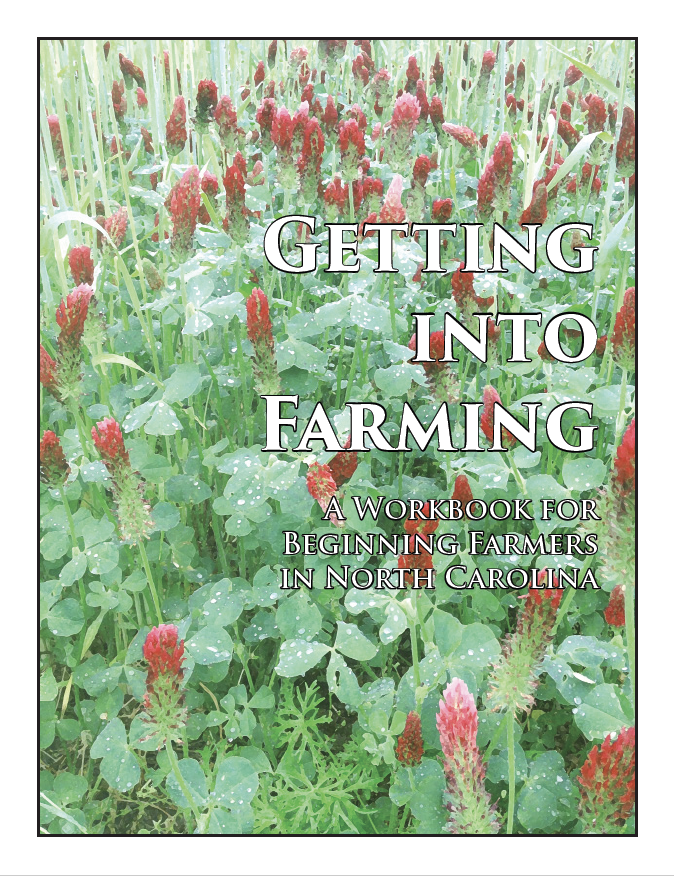|
|
|
|
|
|
|
|
|
|
Monthly Newsletter
January 2023
|
|
|
Extension programs and resources are available to all county residents. Feel free to forward our newsletters on to family and friends. Watch out for monthly announcements of events as this newsletter arrives in your inbox each month or keep up with us on Facebook or Instagram.
(If you do not wish to continue getting this newsletter you may unsubscribe at the link below.)
|
|
|
|
|
|
|
EXTENSION: OUR STRATEGIC PLAN
|
|
|
|
|
Extension Moves Strategically into the Future
As we begin 2023, Extension has a new strategic plan. In recent years, even for the last several decades, North Carolina has been experiencing significant population growth and resettlement throughout our state. This growth has many opportunities and challenges for the NC Cooperative Extension Service. These include the impact of climate change, more resilient agriculture, health impacts of food and nutrition education, and continuing to help elevate our youth to become our future leaders. While we see significant economic growth in some of our urban centers, many of our rural counties are navigating uncertainty, with residents feeling at risk of being left behind.
These are all very real trends—some positive, some negative, but all representing opportunities for Extension to have an impact on our state and inform our future trajectory. As our state continues to grow and evolve, we are prepared to evolve, refocus, and transform alongside it. To do so, we must anticipate trends and be responsive to changing dynamics, whether through programming, resource allocations, policy changes or other shifts. Our new 2030 Strategic Plan shows how we are and how we will evolve to build and maintain a vibrant and sustainable workforce with our Extension professionals at the heart of all we do.
Download the 2030 NC Extension Strategic Plan to read how we plan to continue our mission of providing solutions to improve the lives of North Carolinians as we look at the present and into the future.
|
|
|
|
|
|
|
The 2022 Ag Census Deadline Approaches
Don't Forget to answer to Census of Agriculture. It is a complete count of U.S. farms and ranches and the people who operate them. Even small plots of land – whether rural or urban – growing fruit, vegetables or some food animals count if $1,000 or more of such products were raised and sold, or normally would have been sold, during the Census year. The Census of Agriculture, taken only once every five years, looks at land use and ownership, operator characteristics, production practices, income, and expenditures. For America’s farmers and ranchers, the Census of Agriculture is your voice, your future, and your opportunity.
The response deadline for the 2022 Census of Agriculture is February 6th, 2023.
Respond to the Census of Agriculture survey here.
|
|
|
NC STATE EXTENSION: HOMEGROWN
|
|
|
|
|

Medicinal Plants in the Landscape
The names are exotic and quaint: Manroot, Goldenseal, Bloodroot, Feverfew, and False Unicorn. They sound like something out of medieval literature, or maybe like a folklore tale from the Appalachians, but there’s nothing fictional about medicinal plants. Herbs have been used as traditional medicine since prehistoric times. Today they’re more popular than ever.
North Carolina is home to many medicinal plants. The forests and woods of the Appalachian region, in particular, provide ideal growing conditions, and have long been a place where people have foraged botanicals.
Perennial plants native to this region include bloodroot, ginseng, black cohosh and goldenseal, which are harvested for their roots or for their herbaceous or leafy parts.
In this Homegrown edition, Growing Medicinal Plants in the Home Garden, NC State Extension agricultural crop experts Craig Mauney and Margaret Bloomquist introduce us to several medicinal herbs, and why they might work well in your home garden or landscape.
|
|
|
AG ECONOMICS & FARM SECURITY
|
|
|

Begin Farming: Make a Business Plan
The one thing that has come from the pandemic is that the public is more interested in knowing where their food comes from and learning how and where they can buy local foods. Supporting farmers and buying locally not only boosts the local economy, it also essentially eliminates many of the food shortages and rising prices caused by the supply chain issues like what we saw during the height of the pandemic. For new and aspiring farmers, producing foods for local markets can be the ticket to getting started in agriculture. However, like any business, farms do need to establish a plan and goals for succeeding and for evidentially generating profits.
If you aspire to start a farm start by developing a business plan. Download the Getting into Farming workbook for beginning farmers. The workbook provides worksheets and narratives on budgeting, planning, and record-keeping, advice on seeking land for lease or land to purchase, and guidelines for setting up a business entity.
Additional information on relating to farm succession, preservation, and farm law can be found at: https://farmlaw.ces.ncsu.edu/farm-succession/
|
|
|
|
|
Yaupon Holly
If you are planning a new landscape or just adding to one already established, consider the yaupon holly, Ilex vomitoria. It is a small tree or shrub growing 12 to 25 feet with many popular cultivars popular: weeping forms, columnar forms, and dwarf forms. It is often trimmed into hedges for residential use as foundation plantings. It is evergreen and a very versatile plant that tolerates a variety of growing conditions. Yaupon does well in sun, shade, dry or wet conditions and most any pH level. Fertilize lightly in spring and fall and while typically unnecessary, you can lightly prune a yaupon holly to maintain your desired shape. Some variety suggestions are: Folsom Weeping, Nana/Compacta, Schilling's Dwarf and Stokes Dwarf. Best of all Yaupon it is native to North America especially the Southeast. When choosing your next shrub, consider one of the many cultivars of the yaupon holly.
For more information, contact the Extension Master Gardener Helpline at 910-947-3188, Monday-Friday
By: Dolores Muller, EMGV, Moore County
Photo: by NCSU
|
|
|
|
|
|
|
Find local food year 'round...
Moore County Farmers' Market
www.moorecountyfarmersmarket.com
Armory Sports Complex, Southern Pines, Thursdays,
Year-Round, 9 AM-1PM
(closed Thanksgiving)
|
|
|
See what Moore County farms have going on all year. Download the Visit NC Farms app to find out where to buy local plants and food, where to eat or drink at local restaurants, breweries and wineries, or where to tour local farms and learn about agriculture in Moore County.
|
|
|
|
|

Colic Checklist for Horse Owners
Tom Shea, Livestock Agent
NC Cooperative Extension Service, Moore County
Colic is a word that terrifies horse owners. Colic is caused by many factors, including things we usually can’t control, such as a sudden weather change. Luckily, colic doesn’t always have to result in expensive surgery or euthanasia. There are multiple types of colic, and most can be treated if caught early. The four main types of colic that occur in our area are gas, impaction, sand, and twisted gut.
Gas colic is the most common, has the most straightforward treatment, and is usually not fatal. Gas colic can be caused by sudden changes in feed, ulcers, dehydration, stress, and insufficient forage intake. Horses may appear extremely painful, but this usually resolves with pain medication, fluids, and walking. This type of colic can be prevented by feed and environmental management.
Impaction colic can be caused by feeding lower quality or stemmy feed materials, ingesting foreign materials such as seeds, and improperly chewed food. This is common in horses who are older or need their teeth floated. A veterinarian can sometimes treat impaction colic by administering fluids, mineral oil, and anti-inflammatories. Impaction colic can be fatal if not treated quickly. Owners can prevent an impaction by feeding appropriate forage for their horse, dental maintenance, and ensuring their horse drinks adequate water.
Sand colic is common in horses that live in sandy areas, like the Sandhills and Coastal Plains of North Carolina, and who eat their hay off the ground. The sand irritates the intestinal lining causing pain and disruption of digestion. If not treated promptly, the loose sand in the intestines can harden and form stones, which are painful and may cause an impaction. This can be prevented by feeding out of a hay net or raised bale feeder, and giving supplements like Sandclear and Sandpurge.
The final common type of colic is the twisted gut, which occurs when some part of the intestine twists around itself and is almost always fatal. The twist can sometimes be corrected by surgery if caught early, but often the tissue in the intestines begins dying before surgery can be performed. Preventing the other mild types of colic can help prevent a twisted gut.
It is important to know the signs of colic so treatment can be started as soon as possible. Talk to your veterinarian to develop a plan so you can be prepared if your horse does colic.
Signs of colic:
- Kicking at their stomach
- Flank watching
- Pawing the ground/acting anxious
- Bloating
- Excessive sweating
- Rolling
- Not eating or drinking
- Stretching
- Not passing manure
- Tacky gums
- Heart rate over 50 beats per minute
- Lack of gut sounds using a stethoscope
If you suspect that your horse is experiencing colic:
- Begin walking your horse
- Call your veterinarian to inform them your horse is colicing
- Administer an oral anti-inflammatory medication as advised by your veterinarian
- Remove feed
- Keep horses in an open area to prevent getting caught on something if they roll.
- Ask your veterinarian to come to your farm if
- There is no improvement from walking and anti-inflammatories
- You do not know how long the colic has been occurring or has occurred for several hours.
- Vital signs are abnormal.
- Gums appear dark red or purple
- If any of the above signs occur for longer than 30 mins.
|
|
|
|
|

Larval Host Plants
Written by Savanah Laur, Horticulture Agent
One of my favorite topics is beneficial insects. When I talk to people about these critters, I always talk about larval host plants. Some of our beneficial insects have very specific larval host plants, like monarch caterpillars.
Monarch caterpillars need milkweed to eat. Other butterfly caterpillars aren’t as picky. Swallowtail butterflies, for instance, will feed on many different plants while in their larval stage. Black swallowtail caterpillars prefer plants in the parsley family, like dill, carrots, and queen Anne’s lace.
While most of our native beneficial insects require native larval host plants, some will thrive on non-native, invasive plants. An example of this is painted lady caterpillars enjoy certain thistles. It’s recommended to plant native host plants rather than cultivating non-natives.
The milkweed that monarchs need is a good example of planting native rather than non-native species. Stores sell the non-native, tropical milkweed, which is pretty, but it is also a host for a common parasite to the monarch caterpillars.
For recommendations on what to plant to attract beneficial insects, reach out to your local NC Cooperative Extension office or ask a Master Gardener Volunteer!
|
|
|
HEALTH, NUTRITION & FOOD SAFETY
|
|
|

Make Heart Health Part of Your Daily Routine
Devoting a little time every day to care for yourself can go a long way toward protecting the health of your heart. Simple self-care, such as taking a moment to de-stress, giving yourself time to move more, preparing healthier meals, and not cheating on sleep can all benefit your heart.
And that’s a good thing, because heart disease is largely preventable and focusing on improving your heart health has never been more important. Heart disease is a leading cause of death for women and men in the United States, and many Americans remain at risk of getting it, according to the National Heart, Lung, and Blood Institute (NHLBI). People with poor cardiovascular health are also at increased risk of severe illness from COVID-19.
“Studies show self-care routines, such as taking a daily walk and keeping doctor’s appointments, help us keep our blood pressure in the healthy range and reduce our risk of heart disease and stroke,” said David Goff, M.D., NHLBI’s director of cardiovascular sciences.
It may be easier than you think to “put your heart” into your daily routine. Each Sunday, look at your week’s schedule and carve out 30 minutes daily for heart-healthy practices. Take an online yoga class, prepare a heart-healthy recipe, schedule your bedtime to get at least seven hours of sleep, or make a medication checklist. Then seek out support from others, even if it’s online or via a phone call, to help you stick to your goals.
Here are few self-care tips to try every day to make your heart a priority:
Self-Care Sunday
Find a moment of serenity every Sunday. Spend some quality time on yourself.
Mindful Monday
Be mindful about your health and regularly monitor your blood pressure or blood sugar if needed. Keep an eye on your weight to make sure it stays within or moves toward a healthy range. Being aware of your health status is a key to making positive change.
Tasty Tuesday
Choose how you want to approach eating healthier. Start small by pepping up your meals with a fresh herb or spice as a salt substitute. Get adventurous and prepare a simple, new, heart-healthy recipe. Or go big by trying a different way of eating, such as the Dietary Approaches to Stop Hypertension (DASH) eating plan, which is scientifically proven to lower blood pressure. DASH is flexible and balanced, and it includes plenty of fruits and vegetables, fish, poultry, lean meats, beans, nuts, whole grains, and low-fat dairy products. Extension's Med Instead of Meds program is also heart healthy eating pattern.
Wellness Wednesday
Don’t waffle on your wellness. Move more, eat a fruit or vegetable you’ve never tried, make a plan to quit smoking or vaping, or learn the signs of a heart attack or stroke. You could be having a heart attack if you have chest and upper body pain or discomfort, shortness of breath, cold sweats, nausea, or lightheadedness. You might be having a stroke if you have numbness in the face, arm, or leg; confusion; trouble talking or seeing; dizziness; or a severe headache.
Treat Yourself Thursday
Treats can be healthy. Try making a dessert with fresh fruit and yogurt. Then stretch your imagination beyond food. Host a family dance party, take a few minutes to sit still and meditate, go for a long walk, or watch a funny show. Laughter is healthy. Whatever you do, find a way to spend some quality time on yourself.
Follow Friday
Follow inspiring people and pages on social media, or text a friend to help you stick to your self-care goals. Remember to take care of your mental health, too. Two of the main hurdles to self-care are depression and a lack of confidence, according to a study published in the Journal of the American Heart Association. If your mental health gets between you and your fabulous self, take action to show your heart some love. Reach out to family and friends for support, or talk to a qualified mental health provider.
Selfie Saturday
Inspire others to take care of their own hearts. Talk about your self-care routine with loved ones or share a selfie on your social media platforms. Having social support and personal networks can make it easier to get regular physical activity, eat nutritious foods, reach a healthy weight, and quit smoking.
Learn more in this Self-Care Tips for Heart Health fact sheet and visit www.hearttruth.gov to learn more about heart health.
Source: The National Heart, Lung, and Blood Institute
|
|
|
|
|
|
|
Find 4-H Opportunities in 2023
4-H is a community of young people across America who are learning leadership, citizenship, and life skills. 4-H is about having fun, learning, exploring, and discovering. In 4-H, young people make new friends, develop new skills, become leaders, and help shape their communities. More than 261,000 youth get involved in 4-H through community or project clubs, special interest programs, school enrichment programs, in after school programs, and through our Operation Military Kids program. These youth live in cities, suburbs, small towns, and rural communities.
4-H is the largest youth organization in the United States with more than
7 million participants, and can be best identified by its green four-leaf clover with an H on each leaf. The four H’s on the emblem stand for Head, Heart, Hands, and Health. 4-H is the only youth organization based at land-grant universities and the first experience many youth have with higher education. In North Carolina our land- grant Universities are North Carolina State University in Raleigh and North Carolina A &T State University in Greensboro. 4-H is housed within Cooperative Extension and is open to all youth 5-18 years of age as of January 1st of their enrollment year.
The Moore County 4-H Program welcomes you to get a glimpse of what
4-H is all about. Within Moore County we have 4-H Clubs. 4-H Clubs are a great way to support long-term youth development and build community amongst our youth, while instilling essential life skills such as leadership, commitment, and nurturing relationships. Whether they are working together on projects in Science & Technology, or focusing their club efforts on environmental awareness,
4-H Club youth learn the importance of becoming engaged in the community, country, and world. 4-H Clubs in Moore County include the: 4-H Top Shots Shooting Sports Club, 4-H Sewing Club, Moore County
4-H Teen Council, 4-H Dare to Be Different Club, 4-H Growing Farmers Club, and 4-H Ponies of the Pines Club. We are always looking to add new clubs with varying interests as well. 4-H also offers the opportunity for youth to travel through district, state, national, and international trips. To learn public speaking skills through the 4-H presentations competition, and to earn scholarships through projects and competitions aligned with their interests.
Another opportunity we offer in 4-H are our county summer day camps and our 4-H overnight camp. These offer excellent opportunities for youth 5-18 years of age. Youth participate in archery and rifle, crafts, swimming, leadership and team building, and many more activities each day during week-long overnight camp. During 4-H summer day camps in Moore County youth learn about nature, livestock, cooking, food preservation, horticulture, and much more. These are offered weekly from June through August.
4-H volunteers are the key to our success in the Moore County 4-H program. Whether you’re interested in becoming a club leader, or just have a few hours to invest, we’ve got challenging and fun roles for adults and teens who want to make a difference. Volunteers allow us to expand our reach and help the youth in our communities gain independence, mastery, generosity, and belonging. This type of investment in our community youth grows our future adult-leaders, and allows youth the opportunity to give back to their community through leadership, citizenship, and community service.
The opportunities listed here are only a few of the many opportunities we have county, district and statewide. If your youth have a specific area of interest then there is a program and project curriculum that can match your youth’s interests in 4-H.
For more information on Moore County 4-H, how to get involved and enrolled, or how to enroll in 4-H summer camps please contact Kaley Lawing at (910)-947-3188 or via email at kaley_lawing@ncsu.edu.
You can also visit our website at https://moore.ces.ncsu.edu/the-moore-county-4-h-program/ and click on the “Moore County 4-H” tab on the left-hand side of the page.
|
|
|
|
|
|
|
Read more Moore County Extension news »
|
|
|
|
|
NC State University and N.C. A&T State University work in tandem, along with federal, state and local governments, to form a strategic partnership called N.C. Cooperative Extension.
Accommodation requests related to a disability should be made at least 5 days before the scheduled event
|
|
|
|
|
|
|